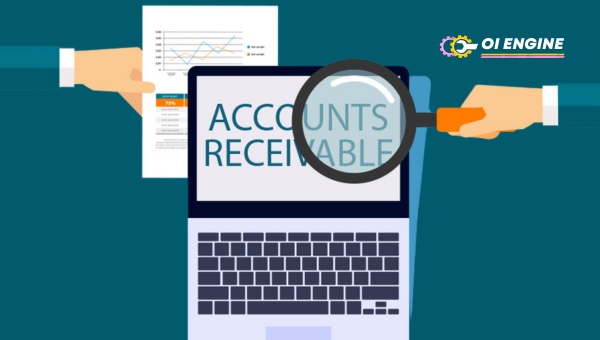As a business owner or someone interested in the financial landscape, you might ask, Is accounts receivable considered an asset? By the end of this post, not only will you know the answer but you will also the logic behind it.
The answer can play a significant role in shaping your understanding of accruing profits and maintaining a healthy cash flow within your business entity.
Beneath all the fancy terminology, accounting principles are essentially about keeping track of where your money’s coming from and going.
The crux of sound financial management lies in getting these vital elements that make up the company’s financial statements – assets, liabilities, and equity.
Among these elements, one term that often leaves people scratching their heads is ‘accounts receivable’. And to make things easy for you, yes, accounts receivable is indeed an asset!
What Are Accounts Receivables?
Accounts Receivable comes into the picture when a company sells goods or provides services to a customer on credit, meaning without immediate payment.

You can think of it as an IOU issued by the customer, vowing to pay at a future date. The phrase ‘on credit’ doesn’t imply any involvement of ‘credit cards’. Here, “on credit” merely means that payment will be made in the future.
For example, let’s say I own a bakery and sell ten loaves of bread to Mr.Green on credit. At this point, Mr.Green gets his bread, but he also gets an obligation, which is to pay me later for those loaves.
Here’s where we see accounts receivable pop up in my bakery business. The promised amount Mr.Green owes becomes an account receivable until he makes his payment.
In performing regular business transactions, ARs are quite common. These occur because immediate payment isn’t always feasible for every transaction, especially in B2B (Business-to-Business) operations where quantities are often large and frequent
Is Accounts Receivable Considered An Asset?
Accounts Receivable (AR) is more than just a figure in business books; it plays a significant role in the financial stability and operation of any company.
But the burning question that I often encounter is, Is accounts receivable considered an asset? The answer to this lies in what AR truly embodies in business finance. As someone who revolves around these concepts, let me break down the intricacies for you.
Clarifying the Role and Status of AR in Business Finance
When we talk about accounts receivable, we’re essentially referring to money that customers owe to a company for goods or services already delivered.
This expectation has a value—hence, accounts receivable is an asset because it represents future cash flows to the company.
Think about it as a placeholder for cash that will soon flow into your business’ hands. Here are five key points that highlight why AR is an undeniable asset in business finance:
- Legal Claim: The first thing is that accounts receivable represent a legal claim against another entity for money. This makes them valuable.
- Impact on Liquidity: They are current assets, which means they can be converted into cash fairly quickly. High-liquidity assets like these are important for ongoing operations.
- Financial Flexibility: Accounts receivables can be used as collateral when securing loans from financial institutions, showing their importance and flexibility.
- Revenue Indication: They indicate future revenues that companies can expect to receive within a short period, usually less than one year.
- Assessment of Company Health: AR includes valuable information on the sales and collection process’s efficiency, reflecting overall business health.
The Importance of AR from an Accountant’s Perspective
From an accountant’s view, overlooking accounts receivable would be akin to ignoring potential assets; they’re fascinators of financial storytelling!
To accountants, every aspect screams crucial—from managing working capital to compliance with reporting standards. Let’s enumerate five reasons why accountants hold AR in such high regard:
- Balance Sheet Strength: Accounts receivables beef up the asset side of a balance sheet, potentially enhancing a company’s borrowing power.
- Cash Flow Forecasting: Accountants rely on AR for accurate cash flow projections which are vital for budgeting and financial planning.
- Credit Management Insight: It provides insights into credit management practices & customer payment behavior—key factors accountants need for risk assessment.
- Revenue Recognition: Accountants record revenue when earned, not when received. Without recognizing AR as assets, revenue recognition principles would be compromised.
- Risk and Opportunity Analysis: Analyzing AR helps identify doubtful accounts and customer creditworthiness—a decisive factor in strategic decision-making.
I want you to know how critical these points are since they underpin robust financial management and provide insights essential for maintaining the vitality of any enterprise’s heart—that is its finances.
Types Of Business Assets
Assets are crucial in business, much like the fuel that powers a car. They come in different forms, and mastering them is key to any company’s success. Assets can be broken down into several types:
- Current Assets: These are assets likely to be converted into cash within a year. This category includes cash and cash equivalents, such as money in the bank and short-term investments. It also comprises inventories, or items available for sale, and, importantly, accounts receivables—the money owed by customers.
- Long-Term Assets: These include items like property, plant, and equipment (PP&E), which are used over time to help a business operate. Long-term investments that won’t get converted to cash within a year also fall under this type.
- Intangible Assets: These are assets with no physical form but still hold value. Intangibles include patents, trademarks, customer lists, and brand recognition.
- Other Assets: This catch-all category includes deferred tax assets and leasehold improvements which don’t fit neatly into the other types.
When we talk about accounts receivable (AR), we place them under current assets because they represent money due to us that we expect to receive soon.
Businesses sell goods or services on credit; AR is where we record these sales until the customer pays up.
Distinguishing Different Asset Types
Different asset types serve unique purposes within a business’s financial framework. Structuring them correctly is vital for both operations and strategic planning:
- Current assets provide short-term financial stability.
- Long-term assets represent future benefits but require more significant investments.
- Intangible assets, although not physical, can be potent value drivers.
- The “Other” Category captures those odds and ends that don’t quite fit elsewhere but still add up in their own right.
Let’s highlight accounts receivables with some bullet points:
- They are legally enforceable claims for payment.
- Recorded at net realizable value (the amount expected to be received).
- Considered liquid because they will turn into cash fairly quickly—they’re not stuck tied up in inventory or complicated machinery.
The nature of each asset type helps businesses prioritize their resources effectively for both ongoing operations and future growth strategies.
Classification of AR Within Business Assets
Accounts receivable sit prominently within the asset classification system as a subset of current assets—a position they’ve earned due to their significance:
- They’re an indicator of sales on credit; high AR levels could signify good sales—but also carry risk.
- They directly impact working capital management—a key aspect of short-term financial health.
- Businesses can track how efficiently they’re converting sales on credit into actual money in the bank.
- Investors judge a company’s operational efficiency by looking at its ability to turn over these accounts quickly without running into bad debt situations.
Recognizing where AR sits concerning other assets underlines its role as an essential component contributing directly to a firm’s quick liquidity status.
Each category has nuances that savvy business owners must manage well if they want their company – big or small – to thrive rather than merely survive.
Monitoring Your Business Assets
As someone who keeps an eye on the health of a business, monitoring assets is like keeping tabs on the fuel gauge in your car—it’s essential to know how much you have, so you don’t run out at a critical time.

In business, assets are more than just fuel; they power every part of your day-to-day operations and future investments. Among these assets, there’s one category that demands consistent attention: Accounts Receivable (AR).
The Importance Of Keeping Track Of Your AR
Keeping track of your accounts receivable is crucial for several reasons, and it’s something that can’t be put off or ignored without risking the financial well-being of your venture. Here’s why this piece of the financial pie deserves regular glances:
- Healthy Cash Flow: First and foremost, accounts receivable represent money owed to your business. If you don’t keep an eye on them, you could end up with a cash flow blockage. Regular tracking ensures that money expected from clients comes in when it should, keeping that cash flow steady.
- Sharper Customer Insights: By monitoring AR closely, you can better customer payment patterns. This information isn’t merely data; it serves as a powerful tool for managing relationships with customers and tailoring services to their habits.
- Risk Management: Staying up-to-date with accounts receivable allows businesses to spot potential risks early on. If certain invoices consistently lag in payment, that’s a red flag indicating financial trouble either in-house or with the customer. Early detection means faster reaction to mitigate any negative impacts.
- Accurate Financial Reporting: Up-to-date AR data contributes to reliable financial statements, which are vital not just for internal assessments but also for attracting investors or securing loans whose decisions hinge upon clear evidence of financial health.
- Strategic Decision Making: Ultimately, knowing precisely where you stand in terms of receivables can inform smarter business decisions. It helps in resource allocation—for example deciding whether it’s safe to invest in new equipment or if resources should be redirected towards collections efforts at times when many payments are outstanding.
These points and taking thorough care of my accounts receivable help ensure stability and pave the way toward smoother growth for any business I interact with.
The give-and-take of providing services now and getting paid later means having a system in place to ensure that “later” comes as expected and agreed upon is paramount—almost like making sure we never run those cars on empty.
Mastering Efficient Management of Accounts Receivables
Managing your accounts receivable (AR) effectively is key to your business’s financial health. After all, effective AR management means you’re getting paid on time, and that’s vital for keeping the cash flowing.

Without a well-oiled AR process, you could be looking at a bottleneck in your finances, and that’s something every business wants to avoid.
The Art Of Managing Your AR Effectively
When it comes to keeping your business financially healthy, the way you handle accounts receivable can make all the difference.
By following a few important tips, you can ensure that you’re not only keeping track of what’s owed to you but also doing your best to collect it promptly:
- Create a Clear Credit Policy: Be clear about when payments are due and stick to it. This helps customers know exactly what is expected.
- Invoice Promptly and Accurately: As soon as work is done or products are delivered, send out those invoices. Mistakes here can lead to disputes or delays in getting paid.
- Follow Up on Payments: If a payment due date has passed, don’t hesitate to send a reminder or get in touch with the customer.
- Employ Aging Reports: Keep an eye on how long invoices have been outstanding with regular reports.
- Train your team well: Make sure the staff responsible for collections know how important their role is in the business’s success.
Getting these things right not only keeps cash flowing into your company; it also keeps relationships with customers professional and positive. When they see that you take this side of business seriously, they’re more likely to do the same.
Pitfalls To Avoid In Managing Your AR
Even with good intentions, there are common mistakes that many businesses make when managing their accounts receivable. These pitfalls can delay payments or even lead to losses:
- Neglecting Follow-Ups: It’s easy to send an invoice and expect it will be paid; always follow up if payments aren’t received on time.
- Lax Credit Practices: Extending credit without proper checks can cause trouble. Always assess a customer’s ability to pay before jumping in.
- Avoid single-point failure: Relying on one person for AR tasks puts you at risk if they leave or make errors without anyone checking their work.
- Forgetting Regular Reviews: Regularly review your AR processes and where improvements could be made.
By being aware of these potential issues and actively seeking to avoid them, you’re setting up your business for better financial steadiness and success.
Proactive management of accounts receivable isn’t just about staying ahead; it’s about not falling behind.
FAQs
Is an account receivable a long-term asset?
No, accounts receivable are not a long-term asset. It’s considered a current asset because it is usually turned into cash within one year or less.
Is accounts payable considered an asset?
No, accounts payable is not an asset. It’s a liability, representing the money a company owes to its suppliers and creditors.
Is accounts receivable a debit or credit?
Accounts receivable is typically recorded as a debit. When a sale is made on credit, the accounts receivable account is debited to record the amount due from the customer.
What is the difference between accounts payable and accounts receivable?
The difference lies in who owes money: with accounts receivable, customers owe money to your company; with accounts payable, your company owes money to vendors or creditors.
What type of account is accounts receivable?
Accounts receivable is an asset account on the balance sheet that tracks money owed to your business for goods or services provided on credit.
Conclusion
Knowing that accounts receivable are an asset is vital for any business owner. It’s not just about selling goods or services; it’s about ensuring that the money from sales comes into your business.
When I handle my accounts, keeping a close watch on receivables is key to keeping the cash flowing and my operations smooth.
Just like making sure the lights stay on and the water runs, making sure invoices turn into real money is part of the lifeblood of a healthy company.
So take it from me, staying on top of your accounts receivable is more than good practice; it’s an essential piece of financial well-being that can’t be ignored.
